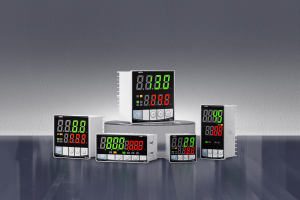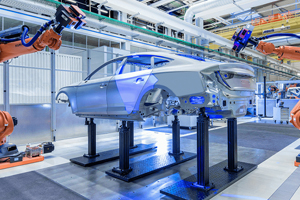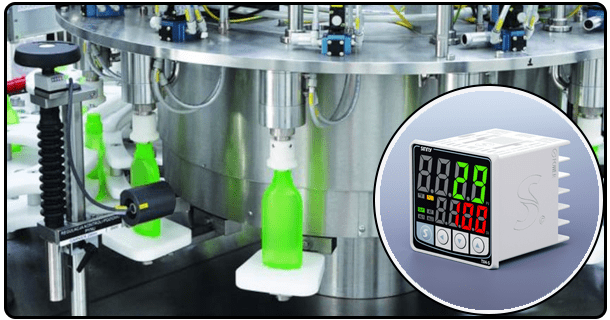implementation, and testing of the PID Temperature Controller Project
Meta Description (Meta description: Learn how to build and test PID temperature control projects. This guide includes hardware selection, software implementation, tuning PID techniques and evaluation of performance for thermal control.
I. I. Introduction
the Proportional-Integral-Derivative (PID) control algorithm. The article explores a PID controller in detail. The article begins with a discussion of the basic principles that underpin PID controls. It then moves on to the critical stage of project definition and specification. Then, the selection and integration process of key hardware components is discussed. It is then explained how the PID algorithm can be implemented within the selected software platform. The article also examines the crucial process of tuning PID and methods to test and evaluate system performance. The article concludes by examining future challenges and possible avenues of development. The purpose of this comprehensive overview is to provide readers with an understanding of design, implementation and operation aspects of a PID Temperature Controller project. It will demonstrate its practical application using a step by step approach.
II. The PID Control Algorithm: Understanding it
The PID algorithm is a powerful and flexible feedback control system. The PID control algorithm is designed to adjust a system input, for example, power to a heater, to regulate the process variable. PID is widely used because it uses three different control actions that each address a specific aspect of the error. The three control actions, Proportional Integral and Derivative, are integrated sequentially.
Proportional Action P: This component produces an output signal directly proportional the magnitude of the error. The difference between the setpoint temperature desired and the temperature actually measured by the sensor is the error signal. A larger error will result in a higher proportional output. Its primary purpose is to correct the variable in the first place, bringing it closer to its setpoint. However, using only proportional actions can lead to a steady state error. The final temperature may not match the setpoint precisely due system delays and unchanging conditions.
Integral action (I): The integral component is used to eliminate the persistent error in steady state. The integral component calculates the sum over time of the error signals. The integral term will increase (or decrease) the output signal if the error continues, no matter how small. This pushes the process variable closer to the setpoint. The system will eventually reach the set temperature if the actuator is able to overcome the opposing force. If not tuned carefully, an integral term may introduce oscillation or lag.
Derived Action (D), This derivative component is based on the change rate in the error signal. The output is based on the rate of change in error. The derivative produces an output signal that is significant if the error rapidly increases or decreases. This helps to anticipate future deviations, and dampens potential oscillations. It improves responsiveness and stability, especially in systems that are prone to instability or overshooting due to rapid changes.
This combination of three actions allows a PID temperature controller to respond appropriately to current errors, to learn from previous errors and to anticipate future ones, thus achieving high accuracy and stability in temperature regulation. This algorithmic basis is essential for understanding the capabilities of PID controllers and their proper implementation in project settings.
III. The Project Specifications and Requirements
It is important to define clearly the goals and constraints before beginning the assembly of hardware and the software development. In this stage, the control objectives, performance metrics and software/hardware requirements are determined.
Control objectives clearly define what the system needs to regulate. The project may aim to regulate air temperatures in small enclosures, maintain the water temperature within a certain range or control the electronic component temperature to avoid overheating. This choice of objective will directly influence the components selected and overall design.
The desired performance is a quantitative target that the system should meet. The target temperature (setpoint), acceptable accuracy or tolerance (e.g. +-0.5degC), required response time, and system ability to resist load disturbances are all included. These specifications provide a standard against which to evaluate the performance of the system.
The hardware requirements are a list of the physical components that must be used. This includes the temperature sensors, microcontrollers or controller units, actuators (heating elements or cooling mechanisms), suitable power supplies, and possibly a user-interface (display or buttons). Determining hardware requirements in advance helps to guide component selection, and also ensure compatibility.
The software requirements define the tools and environments required. It could be based on the processing power, I/O capability, cost and ease-of-use of a particular microcontroller (e.g. Arduino Uno/Nano/Mega ESP32 Raspberry Pi STM32). Alternatively, a PID module or a Programmable Logic Controller could be used. The software platform determines both the programming language and development environment.
The design, implementation and testing stages can be more effectively targeted by defining the project specifications and requirements at the initial phase. This will increase the chances of creating a functional and successful PID temperature control.
IV. Hardware Components
Thermocouples They are widely used because they can measure temperatures over a large range and have a relatively low price. Thermocouples work by measuring the voltage created at the intersection of two metals. When used with digital controllers, thermocouples require signal conditioning such as Leng Jie DianBu Chang (cold-junction compensation) or linearization circuits.
Resistance Temperature Detectors: Provide higher accuracy and greater stability than thermocouples at low temperatures. The PT100 and PT1000 are based on the electrical resistance change of a metallic material (usually, platinum). RTDs are more linear in response, but they can also be more costly than thermocouples.
Thermistors Are known for their high sensitivities, particularly within a certain temperature range. Thermistors have either a positive or negative temperature coefficient. Thermistors tend to be less expensive than RTDs, but they have a smaller temperature range. They are also less linear.
This controller is the brain of the system and performs the PID calculations. In the past, dedicated hardware controllers and PLCs were used. Microcontrollers are used in many modern projects because of their flexibility, affordability and community support. Due to their simplicity and large libraries, Arduino Uno (based on Atmel AVR) is a popular choice for DIY projects. The ESP32 has integrated Wi-Fi, Bluetooth and enables IoT integration. STM32 microcontrollers are better suited for applications that require higher processing power. They also have advanced peripherals. The decision is based on project complexity, budget and processing requirements. A PLC controller or dedicated PID module may be used instead, which offers higher reliability, industrial features, but is more expensive. It is important that the controller has sufficient input/output capabilities (I/O), to allow it to communicate with both sensor and actuator.
Actuator is a component which receives an output command and converts it to a physical act that changes the temperature of the process.
safe operation it is important to use connectors and wiring that are correctly installed.
While not essential for the basic operation of the system, a user interface can improve the diagnostic and usability capabilities. The display will typically include an LCD or OLED screen to display the system status, error values, setpoint temperature and the current value. Potentiometers are used for manually adjusting parameters, such as tuning PID gains. Buttons can be used to set the setpoint and switch modes. Status indicators such as LEDs can indicate power, error condition, or actuator status. A simple system may operate without an interface, but a basic one is recommended to test and tune the system.
A suitable enclosure will protect hardware components against environmental elements such as dust, moisture and physical damage. This can improve the reliability and durability of the system.
The next step, after selecting and assembling the hardware components, is to implement the PID algorithm in the software platform. It involves writing code to read sensor data, calculate the PID output and control the actuator. Software platforms have a significant impact on the development process.
Software platforms offer a wide range of options. Due to the Arduino's ease-of-use, the large support community, and the availability of libraries, microcontrollers such as the Arduino are very popular in DIY projects. The Arduino IDE simplifies the process of writing code and uploading it. Platforms like the ESP32, which has built-in WiFi and Bluetooth capabilities and is suitable for complex projects (and provides more processing power) are also options. Python on a microcontroller or computer with the appropriate libraries, such as pyautotune (for auto-tuning) and numpy (for numerical operations), may be preferable for projects that require robustness. PLC or commercial PID controller packages may be used in some projects. It depends on how complex the project is, whether the programmer has experience with the platform and what functionality it requires.
Software design usually involves a number of key modules. First, the module will read data from the sensor. If you are using a Arduino, this could involve reading analog values using ADCs (Analog to Digital Converters). The code for digital sensors might read data using protocols such as I2C or SPI (e.g. an RTD sensor). Code must contain the appropriate calibration formulas for converting raw sensor data to a meaningful reading of temperature (e.g. degC or °F).
Implementation of the PID algorithms is at the core of software. In the code structure, the parameters of the PID (Kp Ki Kd) are defined. These will be adjusted during the tuning stage. The algorithm determines the difference (the setpoint and measured temperature) to calculate the error. The code uses this error to calculate the contribution of the integral, derivative, and proportional terms. * is the proportional term. Integral term is calculated by adding up the errors over time. This term can be prevented from growing too large using an integral wind-up technique. The most common method is to use a "running total" where error is added over time and then a limitation is set. This derivative estimate is obtained by dividing * (error-previous_error)/time_interval. This previous error will be stored as a variable. The sum of the three calculated terms is what represents the output. The output signal must be mapped onto the actuator control signal.
The code for actuator control translates the controller's calculated output into a message that can be understood by the actuator. The code, for example, uses the calculated output to determine the duty cycle of PWM to control the heating element using a MOSFET. This value is usually between 0 to 255 on an Arduino. The code will use the calculated output (often a value between 0 and 255 for an Arduino) to determine the state of the digital pin. This mapping function matches the output range of the controller to the requirements of the actuator.
The code for a user-interface must handle inputs, such as setting the setpoint (perhaps via buttons or potentiometers) and display relevant information on the display module (e.g. current temperature, setpoint and error).
This sequence is repeated at a predetermined interval by the main control loop (e.g. using loop() on Arduino, or similar structures) in order to achieve a continuous feedback loop. Declare variables to hold sensor readings and other data such as the setpoint value, error or previous error, integral calculation, derivative components and final output. Modularity can be achieved by using functions (e.g. a reading function, an actuator function, and a PID calculation function).
Initial stages of development are critical for testing and debugging. Print statements may be included in the code (e.g. serial.print() for Arduino) that display sensor values, error numbers, and calculated results to allow manual tuning. In the final version, these would be removed or replaced with an appropriate display function.
VI. Installation and Assembly of the System
After the selection of hardware components and writing the software code, the following phase is the physical assembly and setup for the operation. Attention to details is required to guarantee safety and proper functioning.
Connecting the components is the first step in assembling a system. Connecting the components begins with connecting the sensors. Sensors are typically connected to the analog input or digital pins of the controller. Controller output pins (e.g. analog pins for PWM or digital pins for relay switching) are connected to actuators. Power supply pins must be connected to controller power inputs, and sensor power needs. Important Safety Information: Double-check your connections before you apply power. Incorrect wiring can damage components. All connections should be insulated and secure. For sensors and digital circuits, grounding is essential for reliable operation.
The components should be installed in an enclosure that is suitable. It could be in the form of a project box, or even a setup that is custom designed. The mounting protects components against accidental contact or environmental influences. It is important to place the controller in an area with adequate airflow. Cable ties and sleeves can be used to neatly manage wires.
Software code can be compiled on a computer or downloaded to the microcontroller. Code should be error-free. Simple tests involve connecting the three most important components: the sensor, controller and actuator. They are then tested to verify basic functionality such as whether the controller can read the sensor or control the actuator.
7. PID Tuning Process
The correct tuning of a PID controller is essential to achieve the performance you desire. The system can be unstable (excessive waveforms), slow to respond, or not reach the desired setpoint. Tuning is the process of finding values for Proportional Kp, Integral Ki and Derivative Kd parameters in order to optimize the behavior of the system. Iteratively changing these parameters is part of the tuning process. Tuning methods that are common:
Control proportional to the (P):
A proportional expression generates a result that is directly proportional with the error. The proportional gain increases the response of the system to an error. This leads to a faster correction. The goal of the proportional term is to move the process variable towards the setpoint. Its primary purpose is to correct the variable in the first place, bringing it closer to the target. However, using only proportional control can lead to a steady state error. The final temperature may not match the setpoint precisely due system delays or constant load conditions. The output signal's magnitude is determined by the proportional gain. Higher Kp will result in an aggressive reaction, while lower Kp will produce a gradual response. The output signal's magnitude is determined by the proportional gain. Higher Kp will result in an aggressive reaction, while lower Kp will produce a gradual response. The output signal's magnitude is determined by the proportional gain. Higher Kp will result in an aggressive reaction, while lower Kp will produce a gradual response. The output signal's magnitude is determined by the proportional gain. Higher Kp will result in an aggressive reaction, whereas a lower Kp will produce a gradual response. The output signal's magnitude is determined by the proportional gain. Higher Kp will result in an aggressive reaction, while lower Kp will produce a gradual response.
Integral Control (I): By using the integral term, the control can correct the error at steady state that may be left by the proportional terms. Integral gain (Ki), which determines the speed at which the controller can correct this error, is determined by integral gain. The integral term is used to calculate the total cumulative error. The integral term will increase (or decrease) the output signal if the error continues. This pushes the process variable closer to the setpoint. The system will eventually reach the setpoint temperature if the actuator is able to overcome all opposing forces. Integral gain (Ki), which is the amount of time the controller reacts to an error, determines the strength with which it does so. Higher Ki will result in faster removal of the steady-state errors, while lower Ki will lead to slower responses. Integral gain (Ki), determines the strength of the controller's response to error. Higher Ki means faster correction of the steady state error. Lower Ki indicates a more gradual response.
Control (D) Derivative: This derivative control provides corrective actions based on how fast the error is changing. This helps to improve the response of the system when there are disturbances.
- PID Temperature Controller UK: Understanding and Implementing Proportional-Integral-Derivative Control
- An in-depth analysis of the PID temperature controller






















